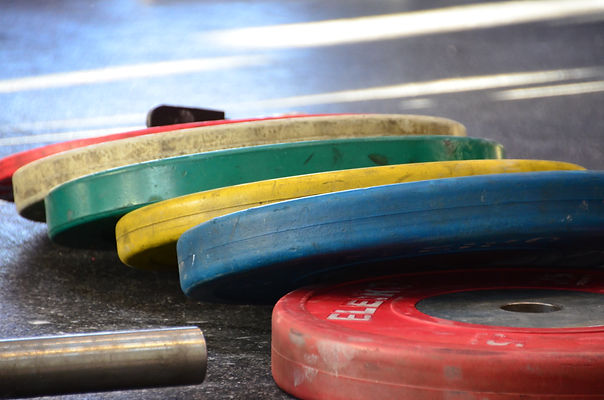With football seasons having just about to get started across the country now, as well as hockey, basketball, volleyball and many other fall/winter sports beginning tryouts it amazes me how many athletes will stop training. Year after year there is a sudden drop off in athletic training as sporting seasons get started. In fact it is like a ghost town in many strength and conditioning facilities at this time of year.

Athletes will often spend the majority of their off seasons pushing to gain strength, size, speed, power and other athletic qualities only to cease their training and allow these factors to decrease throughout the duration of their season. Many athletes often finish their seasons lighter, weaker, and less powerful than when they started. This drop off in fitness have athletes going into play off’s or important games near the end of the season banged up, injured, or not quite as fast as they were. If only there was a way to offset this strength, power, and speed loss while still maintaining performance on the field, rink, or court. Luckily there is, and it’s In-Season Training.
Athletes generally have a lot of miss conceptions about in season training; that they will be too sore for their practices, games, etc. In fact this may be true in poorly designed in season training programs, however a PROPERLY DESIGNED in season training program can actually enhance strength, increase power, and reduce risks of injury. An in season training program should aim to work on the following things.
Preserving Muscle Mass
Preserving muscle mass is one of the most important factors in the in season training program. The preservation of muscle mass will allow the athlete to maintain strength throughout their season, as well as allow them to minimize their risks of injuries throughout the season. In fact this muscle mass can work as body armour around key joints, this can help reduce the stress and injury risks associated with contact and non-contact sports. In season training programs should include some training to preserve this muscle mass especially around key sporting injury sites.
Preserving or Enhancing Strength Levels
Preserving strength levels should be the primary goal of a well-designed in season strength training program. Athletes that maintain or increase their strength levels throughout the course of the season will finish feeling better than those who don’t. As strength levels decrease the risk of injury increases. This is why many athletes find themselves more soar, beat up, or injured near the end of the season. Likely they have not been keeping up with their training and allowing their schedules get in the way. However those athletes that spend the time to keep up with some form of strength training in season will often finish seasons strong and healthier. Not only that but keeping up with training will allow for a higher starting point during the next round of off season training. This can stack over multiple years allowing for greater development.
Use General Training
Many coaches feel that during in season training the exercises need to become more specific to the sport that the athlete is playing, this is incorrect. Athletes in season should be performing more basic exercises since the specific work that they need to be working on will be taken care of during practices and games. Also their conditioning is taken care of through practices, and games. After all how much more specific to playing a sport can you get in terms of conditioning and training than actually playing the sport.
Designing training programs with general exercises aimed at maintaining muscle mass, and preserving strength should be the primary goals and guidelines for the in season training program. Having athletes lift a few key movements a couple of times a week is enough to maintain their strength, power, and muscle mass. Athletes do not need to spend a tremendous amount of time training in season as their sports are already at maximal effort. However they should still attempt to lift regularly to maintain and enhance already established qualities.
Reduce Volume Not Intensity
One of the common misconceptions about in season strength training is that you should lift reduced weights for higher reps; this could not be further from the truth. In fact in order to have a successful in season strength training program you should decrease overall training volume. This means that athletes should lift heavier weights, for less total sets and reps on average than their off season training programs. Another great way to reduce training volume is to decrease the number of training days, and the durations of workout. On average an in season training program should be 2 – 3x per week with total session duration of 45 – 60 minutes total. You should get in get your work done and get out. In season training programs should not aim to fatigue athletes but merely stimulate them to adapt, and maintain.
Conclusions
Athletes who wish to put themselves in the best situations to be successful should attempt to maintain some sort of regular strength training program during their competitive seasons. This training will help them to preserve/ increase muscle mass and strength. This in turn will reduce their likelihood of sustaining injury, and increase their performance factors. These programs should be designed with very general training and reduced volume. Both of these factors will allow athletes to adapt without overloading them to the point that it interferes with their competitive seasons.
Photo Credit
Photo Credit via Photo Pin CC





Comments